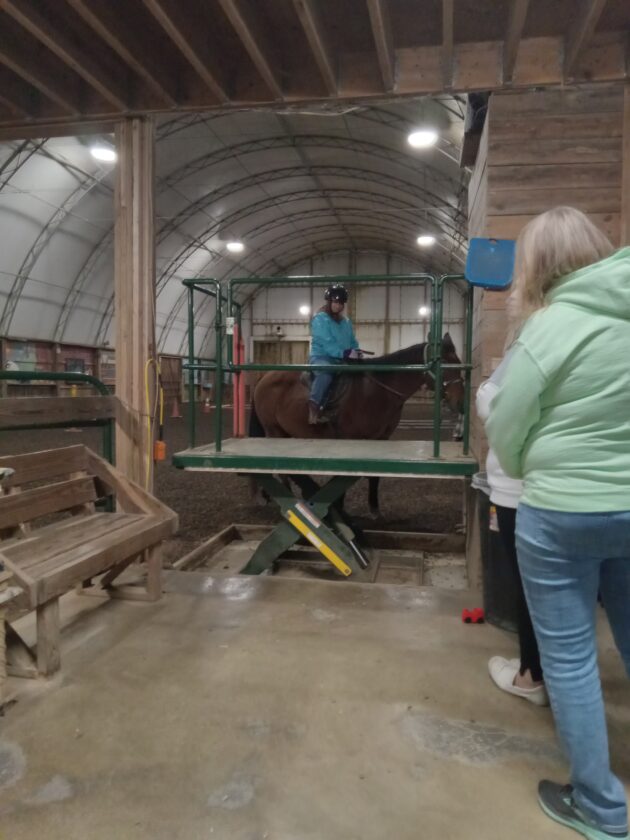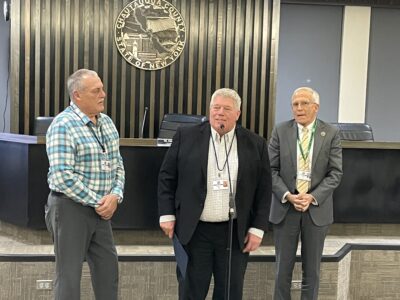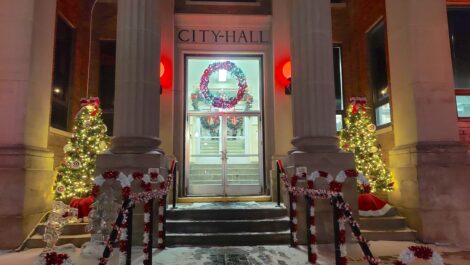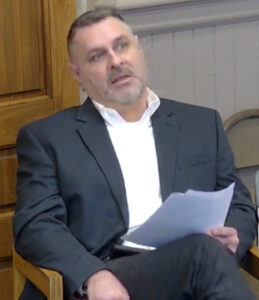Healing with horses: Perceptions reflect your reality

Pictured is Allison Lawson, who started riding at Centaur Stride in 1999, and is about to dismount using lift. Many riders continue to ride or return after a break. Centaur Stride is one of the few activities that promote movement and exercise for people with disabilities.
What we see and believe about the world is shaped by our experiences, emotions, and the voices that influence us. That means sometimes, what we intend to say may not be what others hear. For that, I want to sincerely apologize.
This truth hit me deeply this past week. I was watching a video interview with my successor, and during the discussion, the host — after reading one of my articles, remarked, “It’s amazing that someone in a wheelchair can walk after just riding a horse.” My successor, Holly, then had to step in and try to explain what I meant.
Let me try again here.
As a physical therapist, I’ve worked with individuals facing a wide range of physical challenges. In clinical settings, we rely on evidence-based practices developed through rigorous research. These methods are what students learn in physical therapy programs. But what isn’t covered in depth is how horses, through a specialized approach known as hippotherapy, can be used as a therapeutic tool to support those with physical disabilities. It’s a unique and advanced area of care, one that requires hands-on experience and specialized training.
Years ago, I attended a seminar where individuals with Multiple Sclerosis (MS) participated in a four-day intensive riding program. Every single participant showed improvement to an almost unbelievable degree. I was there, working side by side with the riders as a treating therapist, and even I was amazed at the outcomes.
To understand why this happens, you need to understand MS. It’s a condition where the body’s own immune system damages the nerves, causing a breakdown in communication between the brain and muscles. Reflexes slow, balance becomes more difficult, and walking can feel like an uphill battle. The more someone struggles to move, the more they avoid movement, leading to further muscle weakening, joint pain, and postural issues. This creates a cycle of disuse, fear, and physical decline.
But when a person with MS gets on a horse, something remarkable happens.
The act of sitting astride a horse stretches the hips into a stable position and provides a wide base of support. As the horse moves, the rider’s body begins to respond, automatically. Muscles that haven’t fired in a long time start activating. Postural reflexes awaken. Circulation improves. Pain often decreases. With the guidance of a therapist and the safety of side-walkers, the horse becomes a living, moving platform for healing.
At that seminar, every rider had the option to stop if pain increased. But no one did. In fact, everyone reported decreased pain. As confidence grew, we added exercises and challenged them with movements that further engaged the body. The sensory-motor areas of the brain were being stimulated in powerful ways. By the end of those four days, every rider had made significant progress, not just physically, but emotionally. They still had MS. But they had also regained movement, strength, and most importantly, hope.
This experience changed me.
It made me realize how desperately we needed a therapeutic riding center in Chautauqua County. MS has a higher prevalence around the 40th parallel, places like Buffalo, and Germany. But I wasn’t only thinking of adults with MS. I thought of the children I’d worked with, those with cerebral palsy and other conditions who had never learned to walk.
If horseback therapy could help someone regain lost function, imagine what it could do for someone who never had the chance to develop it in the first place.
And so, Centaur Stride was born as a grassroots effort with the combined effort of many of my friends.
That was 33 years ago. Since then, we’ve witnessed thousands of moments of transformation, heard countless stories of progress, and relied on ongoing support from a compassionate community, both donors and volunteers.
To those who have helped us: thank you.
Centaur Stride does not accept insurance, for many reasons, and we keep our fees far below the actual cost of operation to ensure accessibility for all. That means community support isn’t just appreciated, it’s essential.
I hope to further explain how horses help specific conditions in future articles. We no longer provide Hippotherapy at our center, but the magic healing power of the horses speaks loudly through our riders.
Together, you’ve helped us build something beautiful. And together, we can continue to change lives.
Centaur Stride is located at 8488 Jones Road., Sherman, NY 14781. Visit and like us on FB at linktr.ee/centaurstride.
Claudia Monroe is founder and president of Centaur Stride.



